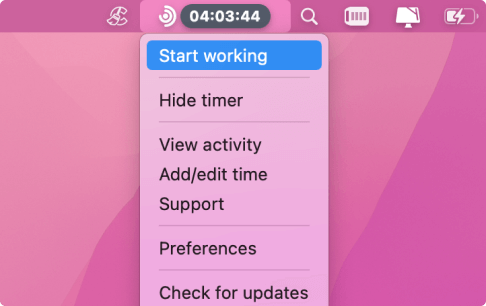
In the world of business, understanding how to measure employee productivity is crucial for success. This guide will help you learn the basics of measuring and improving employee productivity.
Whether you’re a business owner, manager, or part of an HR team, you’ll find practical tips and strategies to assess and enhance your workforce’s productivity.
What Is Employee Productivity?
Surprisingly, while a lot of people make daily decisions aimed at enhancing efficiency in the workplace, they often struggle to provide a straightforward response to this basic question: what is employee productivity?
Trying to define employee productivity can be a daunting task, as there are a number of variables involved. But it can be summed up as follows:
Employee productivity is a multidimensional construct that evaluates the efficiency and effectiveness of an individual or a group of employees in generating desired outcomes, outputs, or results, while taking into account the allocation of resources, time, and effort.
It is often expressed as the ratio of output to input and is subject to various performance indicators and measurement methodologies, with the ultimate goal of optimizing organizational performance and achieving specific objectives.
Based on the definition above, you may wonder if there is an actual formula that can be used to calculate productivity.
Measuring employee productivity can vary depending on the specific goals and metrics you want to track. There isn’t a single formula that universally applies to all situations, as productivity measurement should align with your organization’s objectives and the nature of the work being done. However, here is a general formula for measuring productivity:
Productivity = Output / Input
Output: This represents the desired results, outputs, or work completed by an employee during a specific period. Output can be quantified based on your organization’s goals, such as the number of products manufactured, tasks completed, revenue generated, or projects delivered.
Input: This refers to the resources or inputs used to achieve the output. Inputs can include time, labor, materials, equipment, or any other resources required to perform the work.
To measure productivity using this formula, you need to define both the output and input components clearly. For example:
- Labor Productivity: If you want to measure the productivity of a specific employee or a team, you can use the formula:
Employee Productivity = Total Output by Employee or Team / Total Input by Employee or Team
Output may be measured in terms of units produced, projects completed, or tasks accomplished, while input may include the number of hours worked, materials used, or other relevant resources.
- Company-Wide Productivity: To measure the overall productivity of your organization, you can use a formula such as:
Company Productivity = Total Company Output / Total Company Input
Pro Tip: Using productivity monitoring tools like Traqq helps avoid micromanagement and ensures that your remote or onsite teams stay active and productive while completing their daily tasks.
Output can encompass the total sales revenue, total units produced, or any other relevant measure of your company’s performance, while input may include the total labor hours, capital investment, and other resources used to achieve that output.
Remember that the specific variables and metrics used in these formulas should be tailored to your organization’s objectives and industry. Additionally, it’s essential to ensure that the data you collect is accurate and consistent to make meaningful productivity assessments.
How to Measure Employee Productivity
Measuring productivity is often more complex than applying the straightforward output/input model. This is why there is more than one method an organization can employ when quantifying productivity.
Labor Productivity Method
The labor productivity method focuses on quantifying the efficiency and effectiveness of labor inputs in relation to the outputs or results achieved. This method typically involves assessing the amount of work completed, tasks accomplished, or services delivered by employees within a specific timeframe.
Depending on the nature of the work, labor productivity can be assessed in three different ways:
- Partial Labor Productivity: this method involves measuring productivity by focusing on specific aspects of labor input and output. It is ideal for situations where you want to assess productivity in relation to a particular task, process, or operation.
- Multifactor Labor Productivity: multifactor labor productivity considers a broader set of inputs, such as labor, capital, materials, and technology, to evaluate overall productivity. This method is beneficial when you need a more comprehensive view of productivity that accounts for various contributing factors.
- Total Labor Productivity: total labor productivity encompasses all aspects of labor input and output, offering a comprehensive assessment of workforce efficiency. It is suitable for evaluating overall organizational productivity across multiple functions or departments.
The Hours Worked Method
The hours worked method is a straightforward and widely used approach for measuring productivity in the workplace. It centers on quantifying productivity by tracking the number of hours employees devote to their tasks and projects.
By comparing the output or results achieved to the hours expended, organizations can gain insights into workforce efficiency. This method is particularly valuable for roles where time is a critical factor in determining productivity, such as in hourly wage jobs or projects billed by the hour.
The hours worked method includes three distinct subcategories:
Productive Hours
Formula:
Productive Hours = Total Hours Available – Non-Productive Hours
This subcategory focuses on evaluating the actual time spent by employees on tasks or activities that directly contribute to achieving the organization’s goals. It aims to identify and quantify the portion of an employee’s workday dedicated to productive work, excluding breaks, meetings, and non-work-related activities.
Units per Hour
Formula:
Units per Hour = Total Number of Units Produced / Time Taken in Hours
Example:
Manufacturing company produces 500 units of a product in a week. During that week, the total production time, including all work hours dedicated solely to manufacturing, amounts to 250 hours.
Total Production Hours = 250 hours
Total Number of Units Produced = 500 units
Hours per Unit = 250 hours / 500 units
Hours per Unit = 0.5 hours per unit
Units per hour is a subcategory that measures productivity by assessing the quantity of work completed within a specific timeframe. It calculates how many units, tasks, or projects an employee or a team can accomplish in an hour.
This metric is especially valuable in manufacturing, assembly line settings, or repetitive tasks where output volume is a critical indicator of productivity. It helps organizations set performance benchmarks, optimize workflows, and monitor production efficiency.
Hours per Unit
Hours per Unit = Total Production Hours / Total Number of Units Produced
In contrast to units per hour, this subcategory flips the equation to determine the time required to complete a specific unit of work or task. It evaluates the efficiency of labor input by calculating how many hours are needed to produce one unit or achieve a specific outcome.
Hours per unit can be instrumental in identifying areas where process improvements, training, or resource allocation adjustments may be needed to reduce the time and effort required for each task.
How to Use Productivity Formulas in the Workplace
Adapting the productivity formula in the context of the knowledge economy presents unique challenges due to the multifaceted nature of tasks and roles. Traditional productivity models often fall short in accounting for the diverse range of responsibilities employees have beyond their job descriptions. To accurately calculate productivity while considering these factors, a structured approach is necessary.
Step One: Create a Baseline
The first step is to establish a baseline, a reference point against which you will measure productivity. This baseline involves comparing expected costs (including monetary, energy, manpower, and hours spent) to actual results.
For example, if a designer is expected to produce 1.6 drafts per hour, that becomes the baseline. Deviations from this baseline can indicate underperformance or overperformance.
Step Two: Customize the Formula
To adapt the output/input formula to your specific needs, you must determine the input and output components that align with your productivity goals. Input might be labor hours, units produced, cost per hour, or other relevant factors, while output could be the completion of projects, revenue generated, or client acquisition.
Step Three: Apply the Formula
Utilize the customized formula by plugging in the values of your chosen input and output factors.
The basic formula remains Output/Input = Productivity, which can be modified to suit your requirements. Calculate the result to assess productivity levels accurately.
Step Four: Compare to the Baseline
After obtaining productivity results, compare them to your established baseline. This comparison helps determine whether employees or teams are performing at the expected levels. If the calculated productivity falls short of the baseline, it may signal room for improvement.
While numbers provide essential data for measuring productivity, additional methods can complement your assessment, particularly in the knowledge economy:
- Measuring through Time Management: Evaluate how well employees manage their time, including the time allocated to specific tasks and the efficiency of those time allocations. Time management tools and timesheets can provide valuable insights into individual and team contributions to overall production.
- Measuring through Goal Setting: Establish company goals and milestones that align with overarching objectives. Employees who are aware of and engaged in achieving these goals tend to be more productive. Monitoring progress towards these milestones and meeting deadlines can be effective in measuring productivity.
- Measuring through Objectives: Track individual employee performance through performance evaluations, which assess various aspects of job performance. These evaluations can encompass attendance, inter-office relationships, and task accomplishments. Performance standards and regular 1:1 evaluations play a crucial role in this method.
- Measuring with Full Circle Feedback: Gather feedback from an employee’s coworkers, not just within their department but from all aspects of their work. This method provides a more holistic view of an employee’s performance and productivity. However, it’s often more suitable for small businesses with frequent collaboration opportunities.
Measuring Employee Productivity in Different Industries
Measuring employee productivity varies significantly across different industries due to the diverse nature of work, objectives, and key performance indicators (KPIs) unique to each sector. Here are some key industry differences when it comes to measuring employee productivity:
Manufacturing and Production Industries
In manufacturing and production sectors, productivity is often measured in terms of output per unit of time, such as the number of units produced per hour or per day. Key metrics include production yield, defect rates, and overall equipment effectiveness (OEE).
Employee productivity may also be assessed by analyzing the utilization of machinery and automation in the production process. Reducing downtime and optimizing machine efficiency are critical factors.
Service Industries
Service-oriented industries like hospitality, healthcare, and retail typically focus on customer-centric KPIs. Metrics such as customer satisfaction scores, response times, and service quality are used to assess employee productivity.
In healthcare, patient outcomes, treatment efficiency, and nurse-to-patient ratios are key indicators. In retail, sales per employee and customer retention rates are commonly used.
Technology and Software Development
In tech and software development, measuring employee productivity often involves tracking project milestones, code quality, and adherence to project timelines. Agile methodologies and tools like Scrum boards are used to monitor progress.
Developers may also be evaluated based on the number of lines of code written, but this measure is increasingly seen as outdated and less meaningful than it once was.
Finance and Banking
In finance and banking, productivity is closely tied to financial performance. Metrics include revenue generated per employee, assets under management, or loan origination volume.
Compliance and regulatory adherence are also critical factors in this industry, so productivity may be measured in terms of error rates and adherence to compliance standards.
Construction and Real Estate
Construction and real estate industries often measure employee productivity in terms of project completion times, construction costs, and safety records. On construction sites, the number of tasks completed on schedule and within budget is crucial.
Real estate professionals may assess productivity through metrics like the number of property transactions or sales revenue generated.
Education
In the education sector, measuring employee productivity can be complex. Metrics may include student performance, graduation rates, and teacher-to-student ratios.
Research productivity is also significant in higher education, with publications, grant funding, and research outcomes as important indicators.
Agriculture and Farming
Agriculture relies on measures like crop yield per acre, livestock production rates, and harvest efficiency to gauge employee productivity. The efficient use of resources such as water and fertilizers is also crucial.
In modern agriculture, technology plays a significant role, with precision agriculture techniques being employed to optimize productivity.
Energy and Utilities
In energy and utilities, productivity may be assessed based on power generation capacity, energy distribution efficiency, and maintenance schedules.
Safety records and environmental compliance are also critical factors in these industries.
Creative and Arts Industries
In creative fields such as design, film, and music, measuring productivity can be subjective. Metrics may include project completion rates, client satisfaction, or awards and recognition received.
What Affects Employee Productivity
Employee productivity can be influenced by a wide range of factors, both internal to the employee and external within the work environment. Understanding these factors is essential for employers and managers to optimize productivity and create a conducive workplace. Here are some key factors that can affect employee productivity:
1. Work Environment
- Physical workspace: An ergonomic and comfortable workspace can positively impact productivity. Adequate lighting, temperature control, and noise levels are important.
- Safety: Employees need to feel safe at work to focus on their tasks. A safe environment reduces distractions and stress.
2. Management and Leadership
- Effective leadership: Managers who provide clear guidance, support, and motivation can boost employee morale and productivity.
- Communication: Open and transparent communication channels help employees understand their roles and expectations better.
- Feedback and recognition: Regular feedback, praise, and recognition for good work can increase employee motivation and commitment.
3. Workload and Work-Life Balance
- Overwork: Excessive workload and long hours can lead to burnout and reduced productivity.
- Work-life balance: Employees who can balance work with personal life tend to be more productive and satisfied.
4. Training and Development
- Skills and knowledge: Continuous learning and development opportunities can enhance an employee’s skills, making them more productive in their roles.
5. Technology and Tools
- Access to up-to-date technology and tools: Outdated or inefficient tools can slow down work processes and reduce productivity.
6. Employee Health and Well-being
- Physical and mental health: Health issues can lead to absenteeism and reduced productivity. Providing wellness programs and support can help.
7. Employee Engagement
- Engagement and job satisfaction: Engaged employees are more likely to be productive. They are emotionally committed to their work and organization.
8. Team Dynamics
- Collaboration and teamwork: Positive team dynamics can improve problem-solving, creativity, and overall productivity.
9. Organizational Culture
- Company culture: A supportive and inclusive culture can foster motivation and productivity among employees.
10. Job Design and Task Variety
- Meaningful work: Jobs that offer variety, challenge, and a sense of purpose tend to be more motivating and productive.
11. Employee Motivation
- Intrinsic and extrinsic motivation: Factors like job autonomy, opportunities for advancement, and fair compensation can motivate employees.
12. External Factors
- Economic conditions: Economic factors can influence job security and, consequently, employee productivity.
- Commute time: Long commutes can lead to fatigue and reduce available working hours.
13. Personal Factors
- Personal circumstances: Life events and personal issues can affect an employee’s ability to focus and perform at work.
It’s important to note that these factors can interact and vary from one individual to another and from one organization to another. Employers should assess the specific context of their workplace and consider these factors when designing strategies to improve employee productivity.
Why Measure Employee Productivity
Measuring employee productivity is essential as it provides organizations with a quantifiable way to evaluate and optimize their workforce’s performance. It serves as a crucial tool for assessing individual and team contributions, identifying areas for improvement, and aligning efforts with organizational goals.
By monitoring productivity, companies can make data-driven decisions, allocate resources efficiently, enhance product and service quality, and maintain a competitive edge. Moreover, it promotes a culture of accountability and continuous improvement, ultimately leading to increased efficiency, profitability, and overall success in today’s dynamic business landscape.
Extra Tips for Measuring Productivity
- Leverage productivity tracking software and tools to automate data collection and analysis. These tools can provide real-time insights and reduce manual tracking efforts.
- Establish benchmarks that are achievable and aligned with industry standards. Be aware of the pace and expectations specific to your industry when setting productivity targets.
- Industry-specific productivity norms can vary widely. Research and benchmark against competitors or industry standards to understand where your organization stands.
- Tailor productivity metrics to align with your industry’s unique requirements. What matters in manufacturing may differ significantly from what’s important in healthcare or technology.
- Some industries, like agriculture or retail, may experience significant seasonal fluctuations in demand and productivity. Consider seasonal adjustments when measuring and setting goals.
- In service industries, prioritize quality and customer satisfaction alongside traditional productivity metrics. Happy customers are often loyal customers.
- Industries such as software development and manufacturing benefit from Agile and Lean principles. Implement these methodologies to continuously improve productivity and reduce waste.
- Engage employees in the productivity measurement process. They can provide valuable insights and buy-in, making it easier to implement changes.
- Consider the tools and methods to measure remote employee productivity effectively, such as time tracking software and task management platforms.
- For knowledge-based industries like technology and research, focus on outcome-based measures rather than just input or output metrics. Assess the impact of employees’ work on the organization’s objectives.
Conclusion
Measuring employee productivity is a vital practice that empowers organizations to assess performance, optimize resources, and achieve their objectives efficiently. Whether in manufacturing, healthcare, technology, or any other industry, the right approach to measurement, tailored to the specific context, provides invaluable insights. By leveraging productivity metrics, organizations can foster a culture of continuous improvement, motivate their workforce, and make informed decisions that drive success in today’s competitive landscape.
FAQ
How Do You Calculate Employee Productivity Efficiency?
Employee productivity efficiency can be calculated using the following formula:
Employee Productivity Efficiency = (Output/Input) * 100
Output: This represents the tangible results or value generated by an employee, such as the number of units produced, tasks completed, projects finished, or revenue generated.
Input: This includes the resources, time, or effort invested by the employee to achieve the output.
By calculating this efficiency percentage, you can assess how effectively an employee converts input into valuable output. Higher percentages indicate greater productivity efficiency.
Are There Industry-Specific Differences in Measuring Productivity?
Yes, there are industry-specific differences in measuring productivity. Each industry has unique characteristics, objectives, and key performance indicators (KPIs). What constitutes productivity in manufacturing may be different from healthcare, technology, or research. It’s essential to tailor productivity measurement approaches to align with the specific needs and goals of your industry.
Consider factors like seasonality, quality, compliance, and customer satisfaction, which can vary significantly across industries.
How to Measure Employee Productivity in IT?
Measuring employee productivity in IT often involves tracking project-related metrics, code quality, and adherence to timelines. Consider these steps:
- Track project completion times and milestones.
- Assess code quality through code reviews and testing.
- Use Agile or Scrum methodologies to monitor progress.
- Measure response times for IT support and issue resolution.
- Consider the adoption of IT productivity tools and time tracking software.
How to Measure Employee Productivity in Research?
Measuring employee productivity in research is unique as it often focuses on knowledge work and outcomes. Consider these approaches:
- Assess the impact of research on organizational goals.
- Measure the number of publications, citations, or patents.
- Evaluate the successful completion of research projects.
- Use peer reviews and external recognition as indicators.
- Track the time spent on research tasks and projects.
- Consider the collaboration and teamwork of researchers as a factor.
These methods can help gauge the productivity of research teams and individuals effectively.


